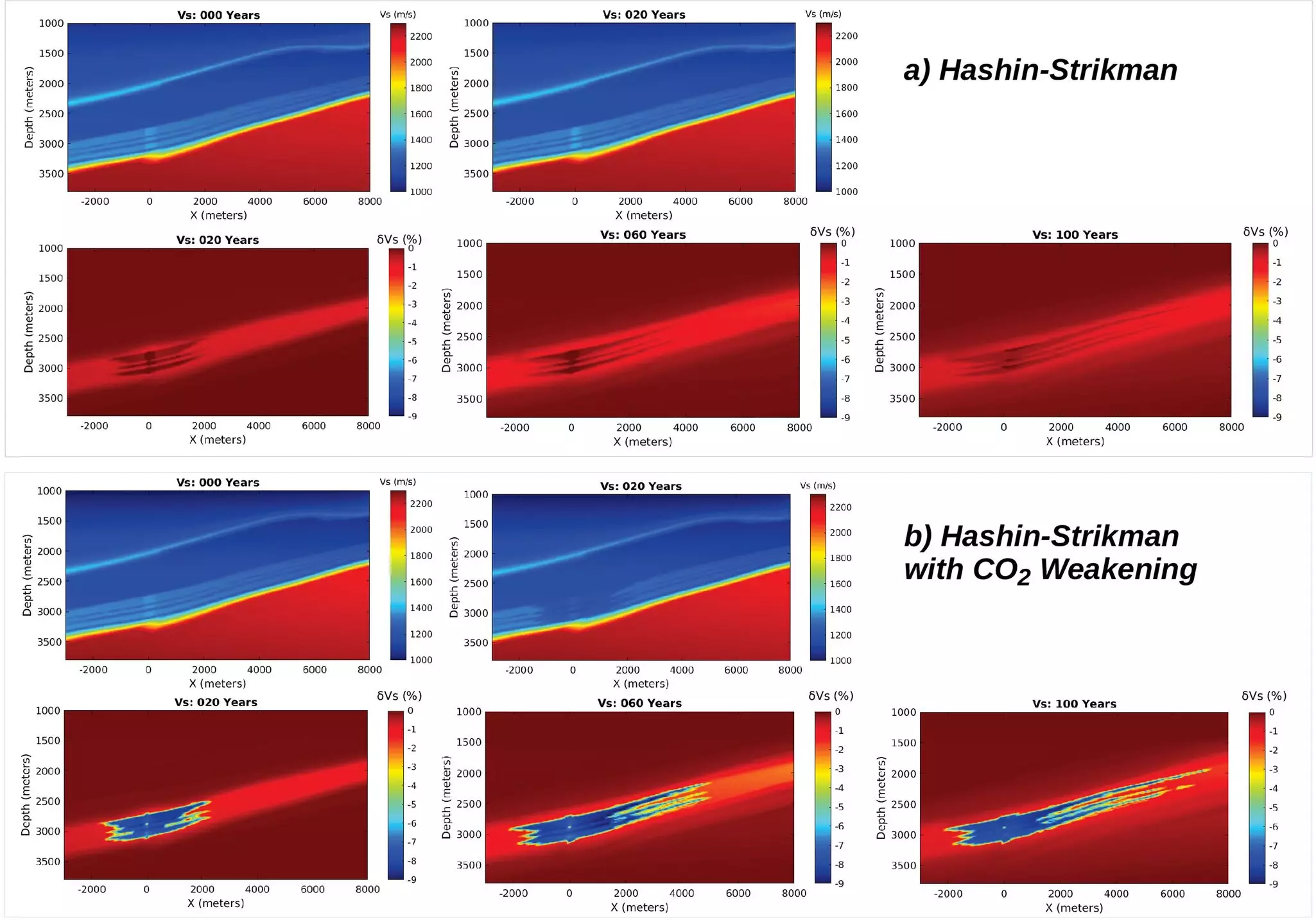Recent research from Los Alamos National Laboratory has unveiled a groundbreaking rock physics model that promises to significantly improve our understanding of carbon dioxide (CO2) storage in geological formations. Published in the prestigious Communications Earth & Environment journal, these findings represent a substantial leap forward in how scientists can monitor geologic carbon storage sites, ultimately enhancing the reliability of efforts aimed at reducing greenhouse gas emissions.
As the impacts of climate change become increasingly urgent, effective carbon capture and storage (CCS) methodologies emerge as pivotal tools in our arsenal against rising atmospheric CO2 levels. Yet, the challenge of developing efficient storage systems has long been hindered by gaps in our understanding of how CO2 interacts with various rock formations over time. This new model provides crucial insights into this interaction, focusing on the transformation of rock properties when CO2 is injected underground.
Challenges with Existing Models
For years, scientists have employed the Biot-Gassmann equation as the standard for modeling the behavior of CO2 in subsurface rock formations. This widely accepted model offers fundamental insights into the elasticity of rocks saturated with fluids, such as CO2. However, it has significant limitations. According to Neala Creasy, the first author of the recent study, the Biot-Gassmann equation fails to consider critical factors like nonlinear stress dependence and chemical reactions that can alter the rock matrix. This oversight can lead to oversimplified and potentially misleading assessments of the geological formations’ stability.
Over prolonged periods, CO2 can chemically alter the mechanical properties of the surrounding rock, affecting both shear and bulk moduli—changes that the Biot-Gassmann equation cannot fully encapsulate. The implication of these oversights is profound: insufficiently modeled interactions can obscure the reality of how securely CO2 remains stored underground, potentially leading to leakage and exacerbating environmental concerns.
Introducing the New Rock Physics Model
The Los Alamos team’s innovative approach aims to address these shortcomings head-on. By integrating richer data on CO2-rock interactions and accounting for the complexities of the chemical and physical changes induced by CO2 exposure, the new model presents a much more nuanced understanding of rock elastic properties. Importantly, this model reveals more pronounced variations in shear-wave velocity compared to the predictions made using the Biot-Gassmann framework, aligning closely with laboratory findings.
Lianjie Huang, a senior research scientist and co-author of the study, emphasizes the significance of these advancements: “Using the new CO2 rock physics model will enable us to more accurately model the effects of CO2 in a storage reservoir.” This enhanced accuracy allows scientists to gain deeper insights into the mechanics of underground CO2 movements, providing vital information about the integrity of storage sites and the potential for leaks.
Implications for Climate Change Mitigation
The ramifications of this improved rock physics model extend well beyond theoretical robust modeling. They carry profound practical implications for climate change mitigation efforts. By bolstering the reliability of seismic monitoring techniques for geologic carbon storage, the new model empowers researchers and policymakers alike to enforce measures that can detect leaks promptly. Such advancements are vital; even small, undetected leaks can reverse the benefits of carbon storage, jeopardizing not just environmental safety, but also public confidence in CCS technologies.
The impact of effective carbon capture technologies cannot be overstated. With global emissions continuing to rise, enhancing the efficacy and safety of carbon storage methods becomes ever more critical. The research from Los Alamos not only addresses immediate prediction issues but also lays the groundwork for a sustainable approach to managing the world’s CO2 emissions.
A Call to Action for Continuous Improvement
This innovative rock physics model exemplifies the essential nature of continuous improvement and adaptation in the field of climate science. As our understanding of geological systems evolves, so too must our models and methodologies. To confront the impending challenges posed by climate change, interdisciplinary collaboration and ongoing research are vital. We are tasked not only with developing better models but with promoting practices that ensure their application leads to meaningful change in carbon storage practices.
As the landscape of environmental science continues to shift, the importance of rigorous scientific inquiry remains paramount. This revolutionary model is a testament to that inquiry and a beacon of hope that innovative solutions can bridge the gaps in our climate change strategies, moving us closer to a future where we can safely capture and store carbon in a manner that effectively safeguards our environment.


Leave a Reply